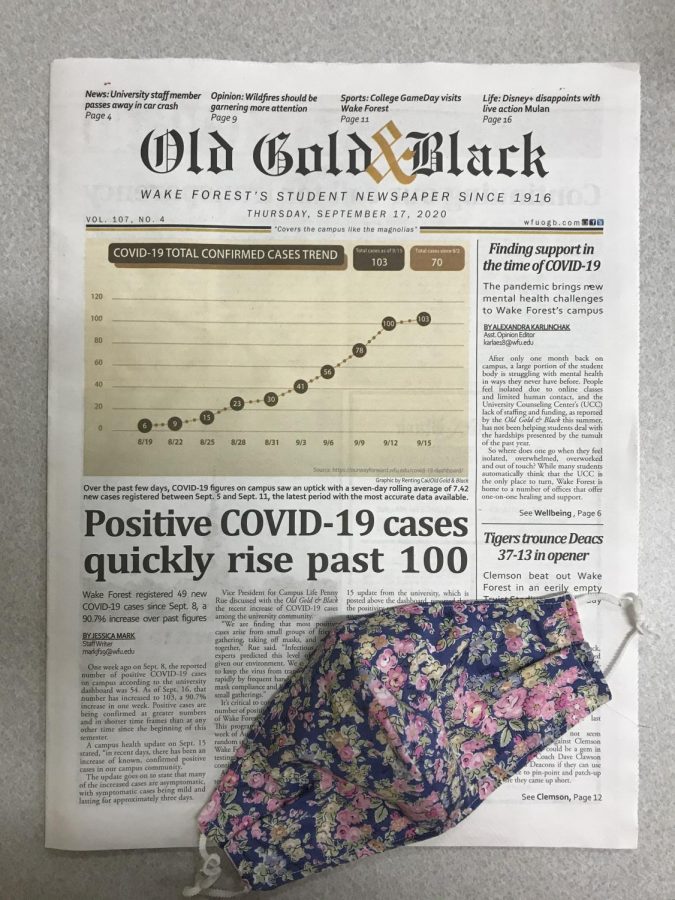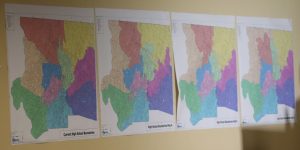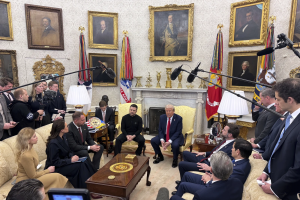Masks are changing how we dress
The fashion industry has been forced to adapt to the COVID-19 economy
As masks have become mandatory worldwide, they are used to define style (Catherine Regen / Old Gold & Black)
November 19, 2020
Over the course of the fall semester here at Wake Forest, you might have noticed a slight change in fashion. Though it was relatively undetectable over the summer and the late spring of this year — due to public restrictions and general subtlety — the adaptation of the average wardrobe has been quite dramatic. Retailers, business consultants and analysts for the fashion industry have all been struggling to realize the individual nuances of this shift. The circumstances of the pandemic have allowed for some predictability; comfort has been emphasized in the face of work from home directives and there has been a lack of public events which results in significantly less formal wear. All of the elements of fashion have been tailored, more or less, for the comfort and well being of the consumer.
The last article I wrote about fashion was a jumbling, abstract conception that culminated in a praise of personal comfort over any stylistic, artistic or cultural concern. In looking at the direction of the industry — the consumer industry more so than high fashion — it seems that things have worked out in favor of the increased desires and necessities of the masses rather than the specific stylistic choices of the individual. The only exception to this would be the notable hike in cosmetic sales —eyeliner and eyeshadow in particular. These spikes are a direct cause and effect of mask mandates — people are increasingly purchasing and using above the nose beauty products to accentuate uncovered facial features. There isn’t any clearer evidence in favor of necessity-based clothing sales more than the dress of the student population here at Wake Forest. A lack of classes, professional obligations, student organizations and most importantly parties have radically altered the clothes most of us wear everyday.
Most importantly however, the tailspin of the nation’s economy has caused more necessity than people realize. In addition to the harsh winter season in most parts of the country, consumers must look for clothes that are warm and valuable — stuff that will last as the economy thaws from the effects of the coronavirus. Clothes are now becoming more of a long term investment than an impulse buy. The phrase ‘democratization of fashion’ has been used for decades, going back all the way to the 1940s. Today, the fashion industry is truly undergoing this process, as consumers work with what they have. The emphasis is on comfort and value, not trends decided by select groups. Athletic leisure, jeans and shirts are becoming staples in our closets.
Over time, there has been less and less public exposure for a majority of the fashion market in the United States. This is a cancerous fact. The largest and most effective advertisements for fashion brands are the products themselves and now they’re being put in the background. Nevertheless, the eradication of fashion advertisement isn’t a foregone conclusion. Although professional models may be missing out on fashion weeks, which serves as their main source of income, most of the market has moved online. A notable update to Instagram has brought shopping to the photo-sharing app. This shop function bolsters the total revenue earned by the app, in turn adding another merchandising avenue for influencers and content creators that exist over social media. Over the course of the pandemic, the fashion industry has trickled into this platform. It wouldn’t be a huge surprise to see the majority of commerce occurring online rather than in department stores or through in person sales — even if the pandemic halts in the next couple of years.















